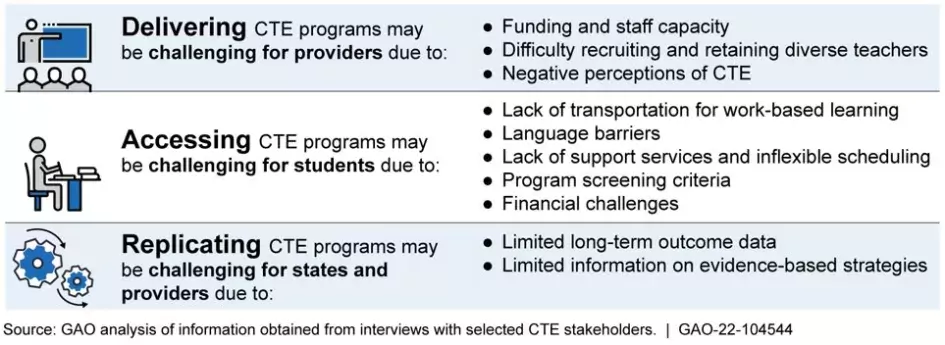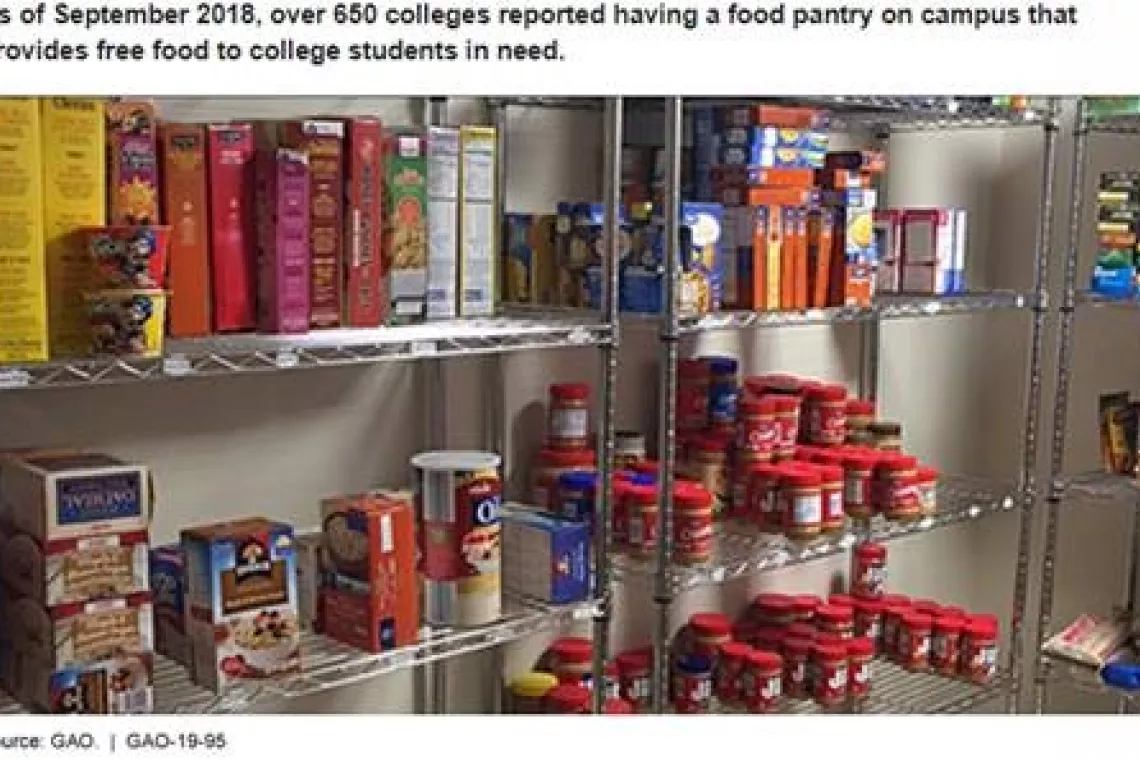Career and Technical Education Programs Face Challenges In Preparing the Future Workforce
In his recent State of the Union Address, President Biden emphasized the importance of investing in training for in-demand jobs. Career and technical education programs, which are often offered at community colleges, are important for providing students with the necessary skills for in-demand jobs. But delivering this training and making it accessible to different student populations can be challenging.
Today’s WatchBlog post looks at our new report on career and technical education programs, including strategies for serving different student populations, and the challenges these programs face.
Image

How do these programs serve students with different needs?
Career and technical education programs are intended to serve students with different needs, including diverse populations of students. As such, program providers and states identified gaps in serving these different student populations. To address gaps, they said they developed targeted services in response. For example:
- One program provider identified low enrollment among English language learners and hired an interpreter to make information more accessible. As a result, enrollment in career and technical education programs increased significantly among this population.
- Another program provider developed career and technical education programs specifically designed for tribal youth. The programs align with the tribe’s major industries in the area. There is a cultural component to each of the programs, such as introducing indigenous ingredients into a culinary arts class.
- One state recognized that students with disabilities often require additional supports. To address their needs, the state developed a career and technical student organization to provide social and emotional learning support. This support is provided to students with disabilities, complementing the education they are receiving. Services include setting career goals and assisting students with job placements.
What are some of the challenges with these programs?
Career and technical education programs face a number of challenges, according to state officials and program providers. For example:
- There is a perception that career and technical education programs are for students who underperform academically. One program provider said parents and students may not know that these programs can lead to high-wage jobs.
- Some students lack transportation to get to work sites, which can limit their participation in work-based learning opportunities.
- A lack of data on long-term outcomes and information on effective strategies for career and technical education can make it difficult to identify proven strategies for implementing or replicating these programs.
Challenges Reported by Selected Stakeholders with Delivering, Accessing, and Replicating Career and Technical Education Programs
Image

What is Education doing to support these programs?
The Department of Education supports career and technical education programs by providing grants, technical assistance, and partnering with other federal agencies like the Department of Labor on youth apprenticeship activities. The Department of Education is also expanding its research in this area. For example, it has awarded grants to conduct new research on the impact of these programs on student outcomes. It has also recently reviewed research on promising career and technical education program models at the postsecondary level, and published information on the findings.
Find out more about our work on career and technical programs by checking out our new report.
- Comments on GAO’s WatchBlog? Contact blog@gao.gov.
GAO Contacts
Related Products

GAO's mission is to provide Congress with fact-based, nonpartisan information that can help improve federal government performance and ensure accountability for the benefit of the American people. GAO launched its WatchBlog in January, 2014, as part of its continuing effort to reach its audiences—Congress and the American people—where they are currently looking for information.
The blog format allows GAO to provide a little more context about its work than it can offer on its other social media platforms. Posts will tie GAO work to current events and the news; show how GAO’s work is affecting agencies or legislation; highlight reports, testimonies, and issue areas where GAO does work; and provide information about GAO itself, among other things.
Please send any feedback on GAO's WatchBlog to blog@gao.gov.




